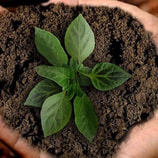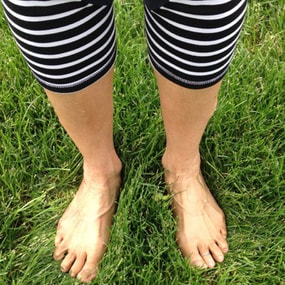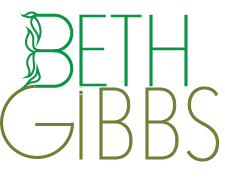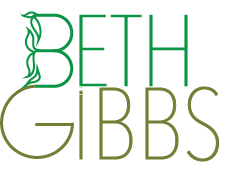ENLIGHTEN UP! a blogSelf-awareness stories: lighting our way to clarity, contentment and resilience in a complicated world.
|
 A popular nursery rhyme from the early 19th century suggests that we are made of many things, frogs, snails and puppy-dog tails,’ for boys, and ‘sugar, spice and everything nice,’ for girls. The bible says, ‘ashes to ashes, dust to dust,’ meaning that we come from dust are made of dust and will return to dust after transitioning from our five sense material world. In terms of the nursery rhyme, I’m hoping wiser heads have let that go. I personally know many sweet spicy men and froggy snail-like women. Although I understand the use of the word ‘dust’ I prefer the word earth. Dust to me is what you find under the sofa when you finally get around to cleaning up. Earth is what you plant seeds in to grow vegetables, plants and flowers. It’s a much pleasanter way to think of yourself whether you are a man or a woman, or place yourself at some other point on the rainbow of human expression. In the next several posts, I plan to explore what we’re made of and how to use those ingredients to enlighten up. Let’s start with earth. We can look at it through three lenses – physical, energetic and psychological. As matter, earth exists as a solid state that we can see, hear, smell, touch or taste. This includes our physical body and everything in and on it. It’s dirt, soil, and the things that grow out of it such as trees, mountains, the buildings we live and work in and the planet we live on. Earth is a homey word that connotes a foundation from which to grow and blossom. No wonder we call our planet — The Earth. As energy earth possesses qualities we need in order to keep ourselves balanced and healthy. At its core earth energy is the force that stabilizes and holds things together. It’s permanent, heavy, slow-changing, slow moving, downward flowing, dense, and enduring. Psychologically, we can think of earth as having qualities of safety, stability, security, nurturance and survival. To successfully connect with these qualities, we need to fully inhabit our earthly bodies with compassion and without judgment – no matter their condition or ability. An example of language that sharpens this connection is the phrase ‘stand your ground.’ Finding ways to stand our ground in these troubled times is a challenge whether due to race, religion, ability, gender, health issues, political affiliation, body image etc. It’s also hard to stand your ground energetically and psychologically if your basic physical needs have not been met. Consider Maslow’s hierarchy of human needs:
Having sufficient air, water, food and safety, establishes a personal root system that helps us grow toward positive social connections, self-esteem and self-actualization. Feeling comfortable and at home in your own skin can be an indication that your connection to earth through all three lenses is balanced. This is evident when you feel stable, compassionate or calm, and when you feel safe and connected to the physical world, your family, friends and support communities. The additional stress many of us deal with these days often manifests as issues that challenge our ability to keep this balance. In order to stand our ground we need to restore that all-important sense of safety and security. Here are two accessible practices that can help.  1. Grounding Earthing is the practice of grounding or connecting directly with the earth through skin contact with bare feet or hands. Earthing can encourage and deepen feelings of safety, security and connection. You can read more about the practice here (in an earlier blog post) and here (in an article at the Yoga for Healthy Aging blog). Those of us able to stand firmly on our own two feet, walk barefoot in the grass or on sand at the beach can experience grounding through direct connection with the earth. If we are able to transfer from standing to sitting or lying down we connect even more of our body to the earth. But what if you are unable to transfer up and down off the floor or connect your body directly to the ground? What if your feet go no further than wheelchair footrests or if parts of your body are missing or movement is limited due to surgery or a health condition? Where there is a will, there is always a way. Missing or nonfunctioning body parts can still be experienced energetically. If this is your lived experience, try the Roots Visualization instead. 2. Roots Visualization 1. Direct your attention to your legs and feet (physical or energetic) to sense a deeper connection to the earth, floor, or wheelchair footrests beneath you. 2. Begin to visualize roots growing from your body, starting from the base of the spine. Feel roots reaching down through your legs through the bottoms of your feet to pierce through the earth’s crust. 3. Visualize your roots branching and spreading, growing stronger and reaching deeper into the earth. Sense the strength, support, and the stability your branching roots send back to fill your entire body. 4. With each inhale begin to draw in strength, support, and stability. Allow the feeling to deepen your connection to the physical world and your place in it. 5. Draw the quality of grounding through the bones of your feet and legs to the base of your spine all the way up to the crown of your head. Feel your entire body safe, secure, stable and connected. You can shorten or lengthen the visualization as needed to stand your ground assertively, authentically, and confidently connecting to your world and earth in all of its forms.
1 Comment
ed
9/13/2021 01:38:26 pm
Recognize the feet !
Reply
Your comment will be posted after it is approved.
Leave a Reply. |
Archives
July 2024
AuthorBETH GIBBS started her yoga practice in 1968, four months after her son was born and she’s been practicing ever since. She currently teaches all levels therapeutic yoga classes for adults, and specialty classes for seniors in the Hartford, Connecticut area. Beth is a certified yoga therapist through the International Association of Yoga Therapists and is guest faculty at the Kripalu School of Integrative Yoga Therapy. She writes for the blogs, Yoga for Healthy Aging, and Accessible Yoga. Her master’s degree from Lesley University in Cambridge, MA is in Yoga Therapy and Mind/Body Health. Categories |
|
|
Enlighten Up! a Blog
|
Copyright © 2023 Beth Gibbs

 RSS Feed
RSS Feed
